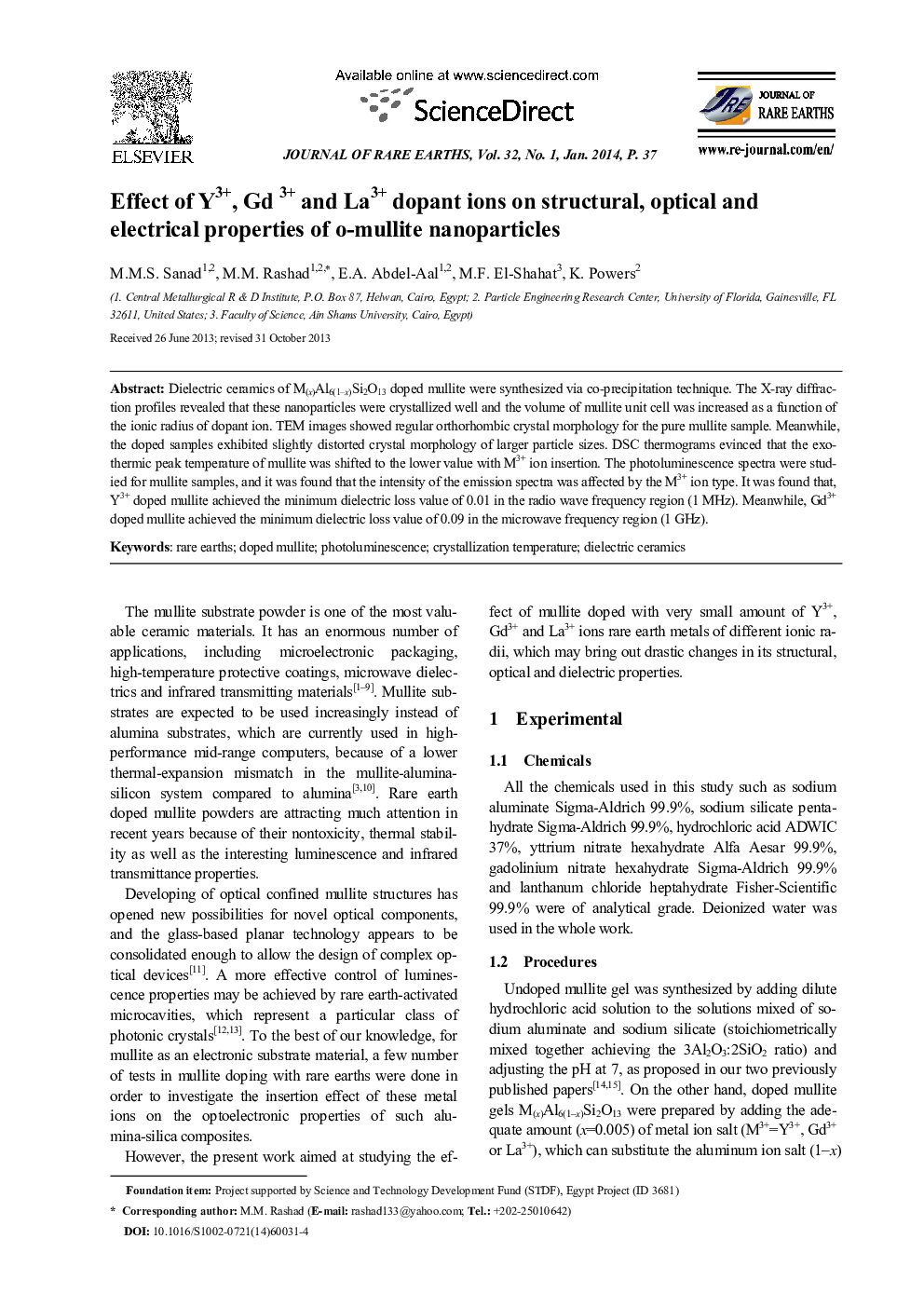| Article ID | Journal | Published Year | Pages | File Type |
|---|---|---|---|---|
| 1261045 | Journal of Rare Earths | 2014 | 6 Pages |
Dielectric ceramics of M(x)Al6(1–x)Si2O13 doped mullite were synthesized via co-precipitation technique. The X-ray diffraction profiles revealed that these nanoparticles were crystallized well and the volume of mullite unit cell was increased as a function of the ionic radius of dopant ion. TEM images showed regular orthorhombic crystal morphology for the pure mullite sample. Meanwhile, the doped samples exhibited slightly distorted crystal morphology of larger particle sizes. DSC thermograms evinced that the exothermic peak temperature of mullite was shifted to the lower value with M3+ ion insertion. The photoluminescence spectra were studied for mullite samples, and it was found that the intensity of the emission spectra was affected by the M3+ ion type. It was found that, Y3+ doped mullite achieved the minimum dielectric loss value of 0.01 in the radio wave frequency region (1 MHz). Meanwhile, Gd3+ doped mullite achieved the minimum dielectric loss value of 0.09 in the microwave frequency region (1 GHz).
Graphical abstractPhotoluminescence emission spectra of produced undoped and doped mullite nanoparticles at λex=254 nm (Inset plot shows variation of the emission intensity with the type of dopant ion in o-mullite nanoparticles)Figure optionsDownload full-size imageDownload as PowerPoint slide
